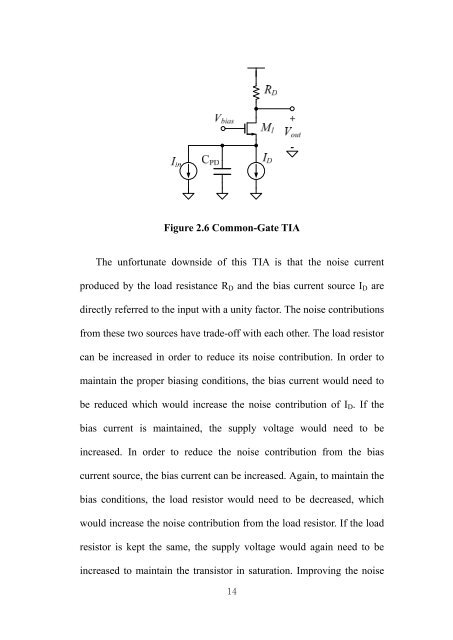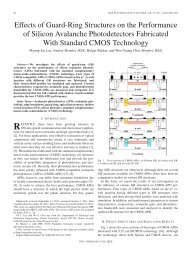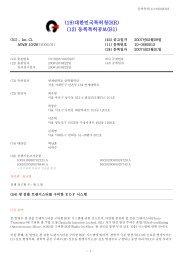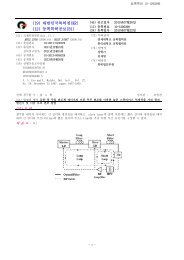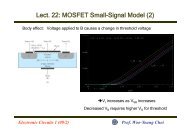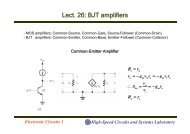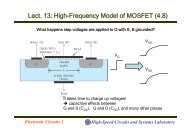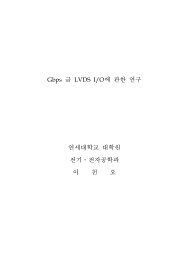10Gbps Optical Receiver and VCSEL Driver in 0.13um CMOS ...
10Gbps Optical Receiver and VCSEL Driver in 0.13um CMOS ...
10Gbps Optical Receiver and VCSEL Driver in 0.13um CMOS ...
You also want an ePaper? Increase the reach of your titles
YUMPU automatically turns print PDFs into web optimized ePapers that Google loves.
Figure 2.6 Common-Gate TIA<br />
The unfortunate downside of this TIA is that the noise current<br />
produced by the load resistance R D <strong>and</strong> the bias current source I D are<br />
directly referred to the <strong>in</strong>put with a unity factor. The noise contributions<br />
from these two sources have trade-off with each other. The load resistor<br />
can be <strong>in</strong>creased <strong>in</strong> order to reduce its noise contribution. In order to<br />
ma<strong>in</strong>ta<strong>in</strong> the proper bias<strong>in</strong>g conditions, the bias current would need to<br />
be reduced which would <strong>in</strong>crease the noise contribution of I D . If the<br />
bias current is ma<strong>in</strong>ta<strong>in</strong>ed, the supply voltage would need to be<br />
<strong>in</strong>creased. In order to reduce the noise contribution from the bias<br />
current source, the bias current can be <strong>in</strong>creased. Aga<strong>in</strong>, to ma<strong>in</strong>ta<strong>in</strong> the<br />
bias conditions, the load resistor would need to be decreased, which<br />
would <strong>in</strong>crease the noise contribution from the load resistor. If the load<br />
resistor is kept the same, the supply voltage would aga<strong>in</strong> need to be<br />
<strong>in</strong>creased to ma<strong>in</strong>ta<strong>in</strong> the transistor <strong>in</strong> saturation. Improv<strong>in</strong>g the noise<br />
14


